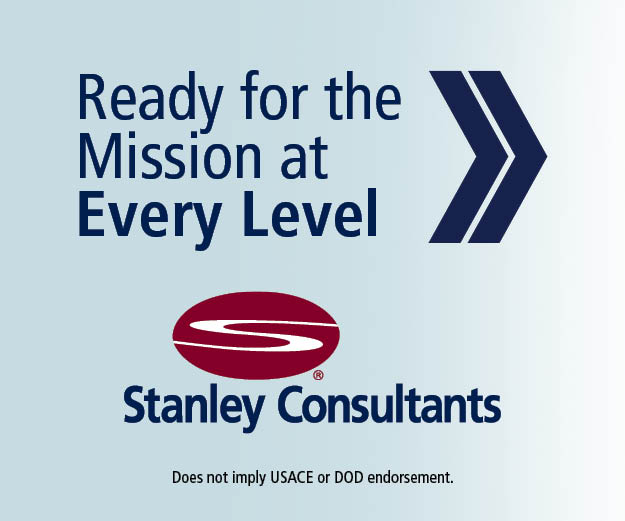
5 minute read
Logistics Activity Supports Typhoon Mawar Response
BY AMANDA RAE MORENO, USACE LOGISTICS ACTIVITY
When Typhoon Mawar devastated the island of Guam, the USACE Logistics Activity’s (ULA) emergency response team members sprang into action to support recovery efforts. The storm was one of the strongest to hit the U.S. island in decades, leaving thousands of residents without utilities for weeks. In total, eight ULA and one Norfolk District personnel were deployed as part of the Logistics Planning and Response Team (LPRT). Members deployed to support various missions in Guam, Hawai’i, and California to support the logistical needs of recovery efforts.
“The logistics mission in Hawai’i was to provide rental and lodging support to those in Guam, and for those that were required to stop in Hawai’i first, as commercial air was not available during the first part of the mission,” said Brandy Urias, Future Operations Branch chief. “This included working coordination efforts with Guam for those that flew via FEMA charter flights.”

This mission continued in Guam as multiple agencies scrambled to find lodging for personnel responding to the disaster. Their position in theater helped them better assess the needs and availability of resources in Guam.
“The logistics mission in Guam was to continue providing rental and lodging support to those deploying to Guam, to include face-to-face coordination with the hotels and rental car agencies,” Urias said. “They also supported the tracking of equipment arrival and departure from the port while providing logistics support to temporary power and blue roof teams.”

Back in California, Mark Thill, Current Operations Branch chief, was deployed from May 24 through June 13 in Long Beach to help support the steady flow of supplies and equipment being shipped from the states to both Hawai’i and Guam.
“My mission was to ship temporary power mission contractor support vehicles via airplanes from Long Beach to Guam in support of Mawar,” Thill said. “The vehicles and equipment were staged at Joint Forces Training Base Los Alamitos. Equipment was weighed, secondary cargo was secured and centers of balance and axle weights were calculated. Equipment shipped included shelters, roll-back trucks, fuel tanker trucks, low-boy tractor-trailers, and forklifts. There was a total of four flights of equipment.”

Thill said that working in the contiguous United States to support an island around the globe with multiple agencies involved came with challenges, but the teams worked tirelessly to get the job done.
“Communications between all the parties was challenging,” said Thill. “The event was in Guam, which was 17 hours ahead of California. The winning bidder for the airlift was based in New York [a three-hour time difference] and the air load planners were in Germany [a nine-hour time difference]. I had to work with the contractor on the ground who serviced the aircraft, the flight crew and loadmaster, who spoke limited English, FEMA transportation, the contractor of the airplane, and two different contractors who were providing the equipment to be shipped. Sometimes load plans were changed hours before the scheduled lift due to changing situations on the ground in Guam. The first flight out was especially challenging, as it had a steep learning curve on getting all the personnel and documentation in place at the last minute to make the flight happen.”

Jennifer Hollis-Mayweather was deployed to Guam in support of the recovery efforts for six weeks. As a seasoned logistics emergency response team member, her knowledge and experience made her a valuable member of the team.
“I am tracking Corps personnel, monitoring the Roofing Hotline, reserving rental cars and lodging, and issuing roofing materials to the contractors,” said Hollis-Mayweather. “I am on a regional activation mission assignment. Therefore, I assist all of the Corps activities during deployment.”
Hollis-Mayweather is proud of the work she has done to help Guam begin the recovery process.
“By being a part of an emergency response team, I can be a part of helping to ensure that people receive the help they need in a timely manner,” she said. “Knowing that I have helped those in need is a fantastic feeling.”

Thill gave advice for those volunteering with emergency response teams following a natural disaster: “Communicate, communicate, communicate.
“And be flexible,” Thill said. “If in doubt, use the phone, do not assume everything is ready and the documentation will be there when needed, and be prepared to make informed decisions. If I did not have the ability or wherewithal to directly make contact with all the parties involved in the movement of the freight, it would never have flown.”










